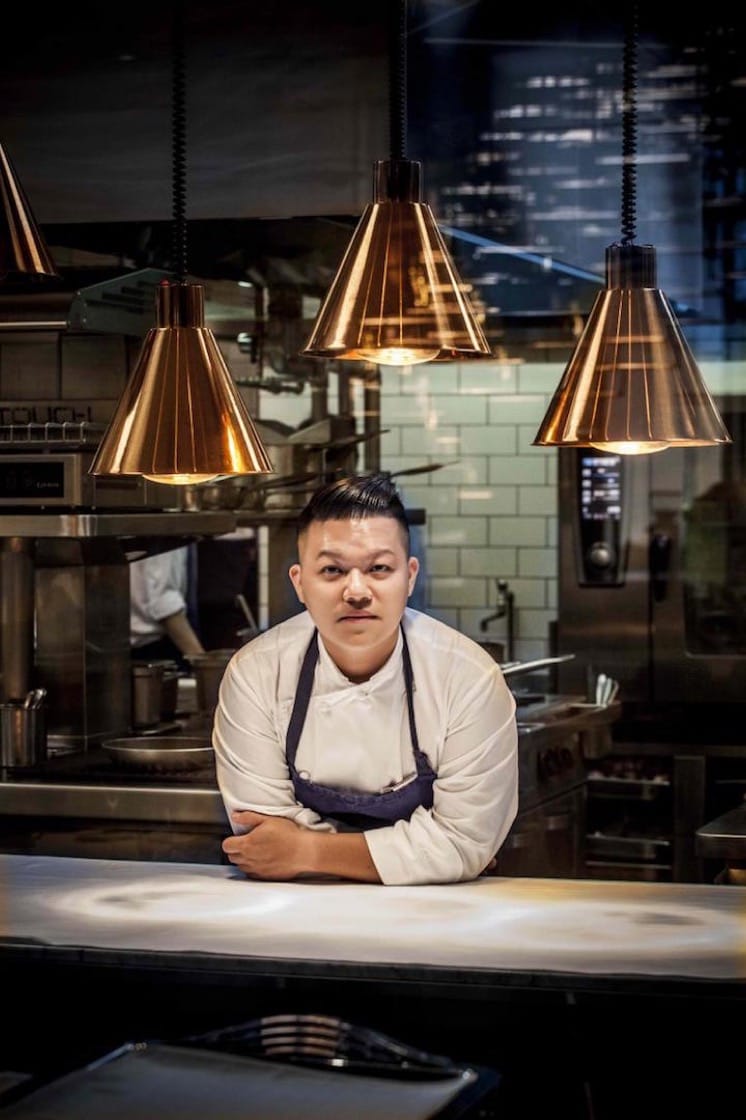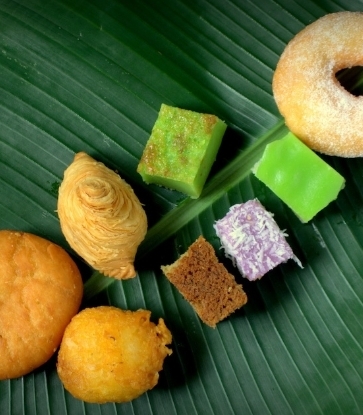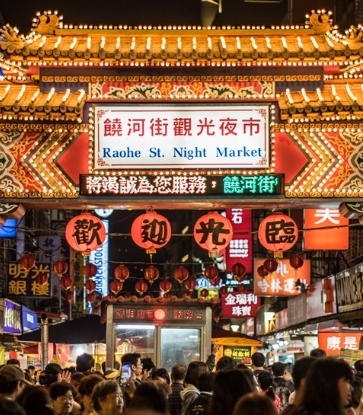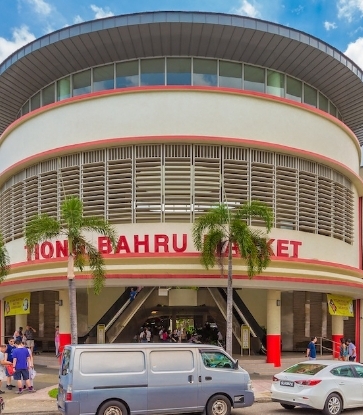It is difficult to sum up what the taste of Taiwan is in one sentence. The cuisine is an amalgamation of the food cultures of the land’s people groups and places, brought to life by the abundant resources from its mountains, forests, and oceans; it is in the street food culture and in the MICHELIN-starred restaurants all at once. Whether it’s in Taiwanese dishes or Western cuisines, the “flavor of Taiwan” manifests in different ways, but its common thread is its ability to give people a taste of the land and its colors, as well as the unending innovations of Taiwan’s culinary world.
FURTHER READING: Articles on Taiwanese Food

Taiwanese ingredients and the traditions behind them
For one-MICHELIN-Starred Mountain and Sea House, which specializes in exquisitely crafted Taiwanese cuisine, the flavor of Taiwan is in the ingredients, not just because they are locally sourced, but also because of the rich cultural traditions behind each ingredient. “We believe that the flavor of Taiwan comes from produce that is indigenous to the land,” says Stephanie Ho, CEO of Yuen Foong Yu Biotech, citing Mountain and Sea House’s signature Seasonal And Classical Fish dish (Hero image, Photo: Mountain and Sea House) as an example. Freshly caught fish of the day from Kanzaiding, Keelung are deboned, then stuffed with rat’s tail noodles — a product representative of Taiwan’s rich rice culture — and Duanmu shiitake mushrooms. The fish is then surrounded with sun-dried shrimp from Penghu, chives and Hamaguri clams that enhance the taste of the dish. “Taiwanese gravies are all about umami. We love adding clams to stocks; whether it’s in vegetable-forward dishes like loofah and clams or fresh fish soup. That taste is the connection to the Taiwanese food memories,” she explains.
FURTHER READING: How Taipei's MICHELIN Green Starred Restaurants Combine Sustainability and Gastronomy
Meanwhile, the Calacahay is a dish of Pacific striped bonito cured in kombu, then topped with sliced lemon peel, steamed century egg, fried tofu, and avocado, capturing the “breathing sea” that the chef saw in Taitung, as well as the memories of the local people simply enjoying fresh sashimi with salt, chilis, and water.
"The past few years, I find myself thinking more deeply when I’m innovating dishes,” says Ho. “It’s not just about the combination of ingredients and flavors, but also about their cultural and historical contexts and how they compare from place to place.”
FURTHER READING: Recipe: Tea Egg

For example, Taïrroir’s Pot au Feu draws the parallels between the classic French dish and Taiwanese hotpot. Ho stews Australian Wagyu beef cheeks in a stock of beef bones, oxtail, and beef broth and serves the pot au feu Japanese shabu-shabu-style, with delicate Wagyu shoulder slices and bone broth. While the French might have an accompanying aioli dip, Ho serves his rendition with a homemade Taiwanese shacha remoulade.

“The flavor of Taiwan represents its people’s long-standing emotional tie to the land and its produce. As we explore and share our thoughts with one another, we will be able to find more consensus and clarity about what that flavor truly is, and share it with the world,” adds Mountain and Sea House’s executive chef Leo Tsai.
Flavor combinations, memory, and cultural context
The “flavour of Taiwan” may also lie in specific flavor combinations, memories, and scenes. Born and raised in Taichung, chef Kai Ho of two-MICHELIN-starred Taïrroir (pictured right, Photo: Taïrroir) has a unique knack for expressing his memories and experiences of Taiwan in his dishes. For example, a dish that translates from Chinese as “Unforgettable Truffle Barley” is a pairing of brioche flavored with pickled mustard greens and Piedmont black truffle, while the barley velouté is magically reminiscent of the street food combination of Si Shen (four-herb) Soup and gua bao.

The influence of time and space
The flavor of Taiwan is an ongoing conversation. Different generations of Taiwanese have different expressions of it, where consumer and practitioner are both participants and definition-shapers. “The flavor of Taiwan that my grandparents experienced must be different from that of my parents and I. McDonald’s has been a part of my life since I was born, and my tastes are also shaped by the Southeast Asian flavors at the ASEAN Square which I visit often — these are all the 'flavors of Taiwan' to me. I’m too young to call the ancient flavors of 100-year-old traditional dishes my taste of Taiwan, but the milk tea and the burger patties from the corner breakfast shop are the flavors of my childhood,” says Lin.
Although Sur-’s cuisine appears French, the chef feels that it is Taiwanese at heart — from the way he intentionally and methodically deconstructs the daily rhythms of Taiwan, and then reassembles it into his own uniquely “Sur-” Taiwanese cuisine.
For example, an appetizer of hot and sour soup called Champagne / Southeast Asian Herbs / Tomato / Limes is made with dayflower leaves, hot and sour soup herbs, coriander, and an assortment of other Southeast Asian herbs that is cooked with champagne and white wine, and then frozen and clarified. The inspiration for the dish comes from the nearby ASEAN Square where many Southeast Asian immigrants work. From the very beginning of the restaurant’s establishment, Lin has sought to reduce the elements of French cuisine. “I have never been abroad [to work or to study], and my taste buds are skewed towards Taiwan. I hope that through this intentional approach to cooking, I can focus on clarifying my cuisine style,” he says.
FURTHER READING: 8 Newly Awarded MICHELIN-Starred Restaurants in Taipei & Taichung — What the Michelin Inspectors Said

The future of Taiwanese taste
Continuous dialogue and exploration are necessary to further define the flavor of Taiwan.
The exquisitely crafted Taiwanese dishes at Mountain and Sea House follow the traditions of the old master chefs. The restaurant also offers small plates for accompanying Taiwanese wine and elevated night market street snacks. From food to drinks and small plates to main dishes, Mountain and Sea House seeks to express the diversity of Taiwan’s flavors in different ways, all rooted in Taiwanese food culture and consumer demand.
Another dimension of Taiwanese flavor might include its dialogue with the world, looking at geography, global food cultures and historical traditions, and seeing what Taiwanese cuisine can accommodate. Taïrroir’s chef Ho says, for example, that he once added shacha sauce to Mexican mole and was surprised at how well they went together because of their common nuttiness. Similarly, a spiced rice dish like pilaf draws parallels with Taiwanese sticky rice in how all the aromatics are cooked together in one pot. “Cooking techniques share commonalities and compatibility in different areas, and I am curious to explore and share that,” Ho says.
Sur-’s chef Lin believes that the flavor of Taiwan does not just hinge on taste, but also on the changes in the general hospitality industry — factors such as environmental and economic conditions, or a chef’s resources, will affect the ingredients being purchased, the size, or the concept of the restaurant. He raises the example of how during the pandemic and economic downturn, many people chose not to go abroad, increasing domestic demand and causing chefs to look inwards.

Since returning to Taiwan in early 2014, renowned Taiwanese chef André Chiang (Pictured left, Photo: Raw) has been pursuing the flavor of Taiwan at his restaurant, two-MICHELIN-starred Raw, as well as at the Taiwan Flavor Symposium, an event that he spearheaded and organized in 2014. He believes that Taiwanese cuisine in the past years has leveled up through three stages: first, consideration and self-acknowledgement; second, deeper thinking and better products; and third, mainstreaming and allowing more to experience and give recognition to the cuisine. Now, the recent years are marked by brand-building and international recognition.
“Many raw material-producing places don’t have the power to speak, but from produce to product, it is important to establish a brand and even become a trendsetter,” Chiang explains.
For him, being “local” is not the final answer to what the flavor of Taiwan is. More critically, going “global” is what is required for Taiwan to enter the next stage of evolution.
In the fall of 2021, Chiang presented the 100 Years Of Flavors menu at Raw, a collection of hundreds of traditional and classic tastes of Taiwan, created with the intention of exploring how to keep tradition undiluted and alive in the minds of everyday people. Meanwhile, the latest Re:define Future menu is a conversation about climate change, ecological imbalance and the difference between needs and wants, among others — all of which are global issues.
FURTHER READING: An antidote to homesickness: André Chiang and his beef noodle soup

Another important project on Chiang’s plate is systematically organizing the flavors of Taiwan in a scientific way. Taiwanese cuisine has always been inclusive and open, but the chef reckons that its identity could be too easily diluted by “going with the flow”. “As with everything, if you don’t claim it, you don’t own it,” he says.
Thus, he set up the Taiwan Flavor Spectrum in Dadaocheng three years ago, a research institute to analyze and study the taste of Taiwan. The institute is working to put forward a clear proposition and establish the basis for the discussion of Taiwanese cuisine and its brand identity. Chiang hopes that in the future, the research can be integrated as part of the curriculum for culinary students as an elective, to sow the seeds of thinking in the new generation of F&B practitioners and light a clear path for moving forward.
There is only more to look forward to in the future as the “flavor of Taiwan” evolves with dynamism and energy and takes its place on the global stage.
This article was written by Hsieh Ming Ling and translated by Rachel Tan. The original article can be viewed here.
Header image is from Mountain and Sea House.






















